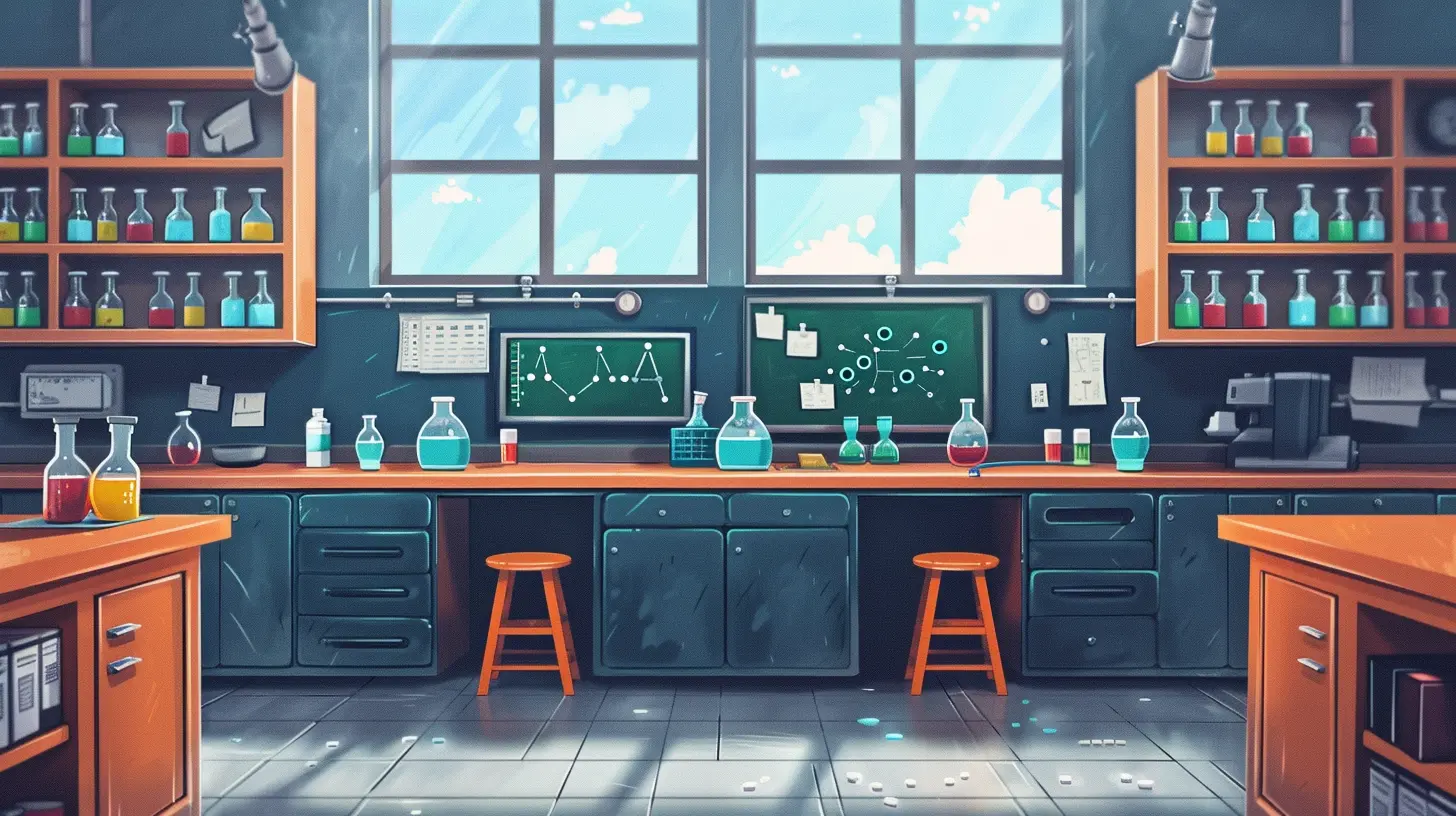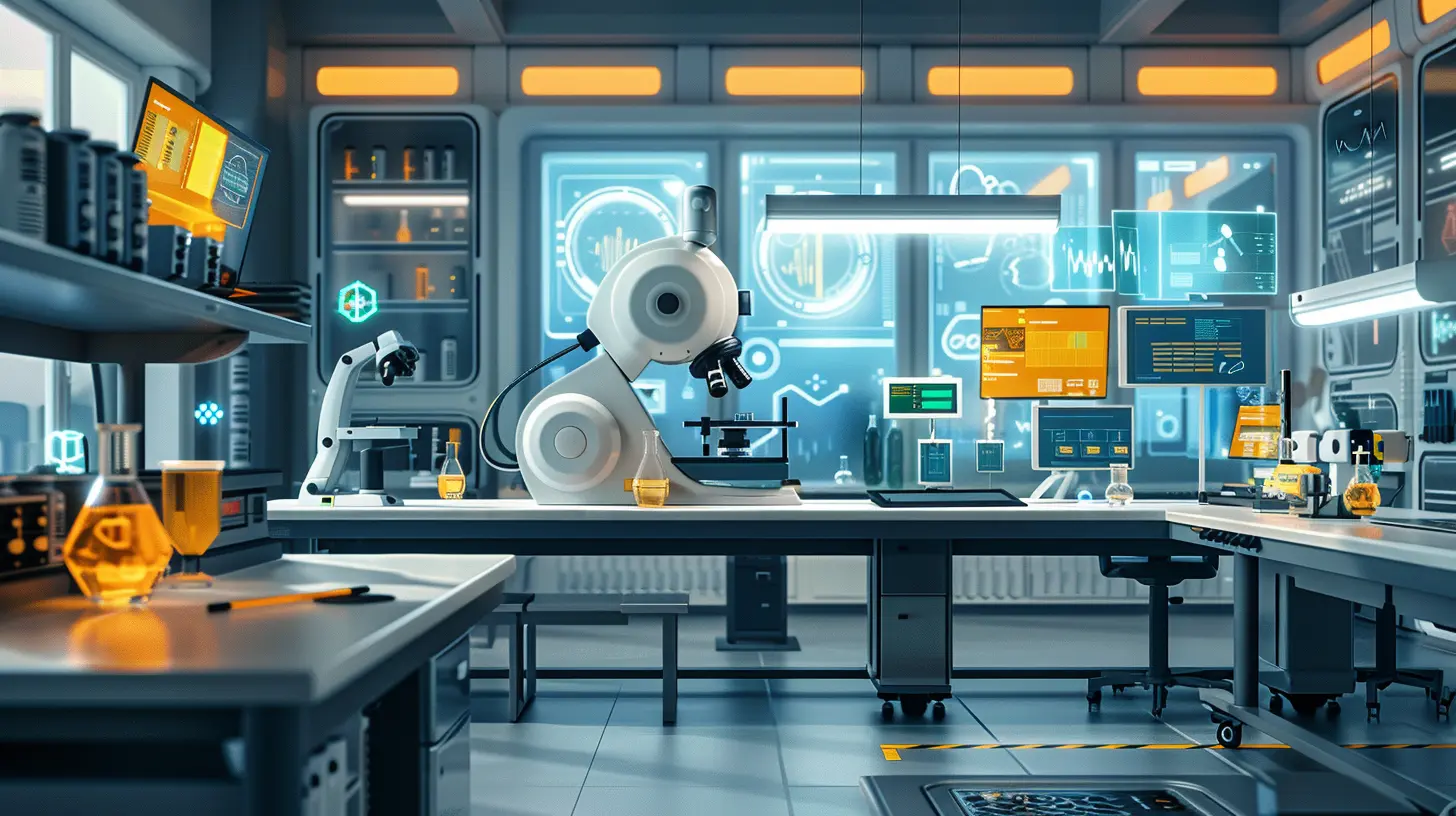How Online Simulations Are Making Science Labs Accessible for All
17 July 2025
Let’s face it—science labs have always kind of felt like a rite of passage. From suiting up in those oversized lab coats to messing around with beakers and Bunsen burners, it’s a part of education that’s not just informative, it’s downright fun! But what if you don’t have access to a physical lab? What if your school can’t afford one, or you’re learning remotely?
Well, here’s the good news: online simulations are stepping in and changing the game. They’re turning laptops and tablets into full-blown virtual science labs, and honestly, it’s kind of amazing. So, let’s get into how these digital tools are making science labs accessible for everyone—no matter where you are.
What Are Online Science Simulations, Anyway?
Before we dive deeper, let’s clear up what we’re talking about. Online science simulations are interactive, digital environments that let students conduct scientific experiments virtually.Think of them as video games for learning science. You’re not just watching something happen—you’re actively doing it. Mixing chemicals, adjusting variables, observing results—all from your screen.
And the best part? There’s zero risk of blowing anything up. (Sorry, no dramatic chemical reactions today.)
Why Traditional Science Labs Aren’t Always Accessible
As cool as science labs are, they come with their own set of challenges—especially when it comes to universal access.1. Cost Barriers
Building and maintaining a lab is expensive. Equipment, chemicals, safety gear, maintenance—it all adds up. Not every school has the budget to support a fully equipped lab.2. Geographic Limitations
Students living in rural or underdeveloped areas often don’t have access to advanced educational infrastructures. Sometimes, the closest science lab is miles—or even countries—away.3. Safety Concerns
Let’s be real: science experiments aren’t always safe. Whether it’s handling corrosive chemicals or working with live organisms, there’s a risk factor involved—especially with younger students.4. Limited Time and Resources
Teachers often struggle to squeeze full-blown experiments into tight class schedules. Plus, you only get one shot at an experiment in a traditional lab. If you mess up, that’s it.5. Lack of Inclusivity
Some students with disabilities find it difficult (or in some cases, impossible) to participate in traditional labs. Accessibility isn’t just about geography—it’s also about physical and cognitive abilities.
How Online Simulations Break Down These Barriers
Now for the good stuff: how online simulations are totally flipping these obstacles on their heads.1. Accessible Anytime, Anywhere
Whether you’re in a bustling city or a quiet village, all you need is an internet connection and a device. Students can log in and start experimenting without stepping foot in a physical lab. It’s like having a portable science classroom in your pocket.2. Budget-Friendly Learning
No fancy lab equipment? No problem. Simulations eliminate the need for costly setups. Schools save money, and students still get a high-quality lab experience.3. Safe Experimentation
Students can conduct complex experiments without any danger. Want to combine reactive chemicals? Go for it. Curious what happens when you mess with electric currents? Try it out. No burns, no spills, no safety goggles necessary.4. Repeat As Many Times As You Want
One of the best things about simulations? You can try, fail, and repeat. Learning becomes an iterative process. Make mistakes. Learn from them. Try again. It’s all part of the fun—and the learning.5. Inclusive for All
Online labs can be designed with accessibility in mind. Features like screen readers, captioning, and keyboard navigation open the door for students with disabilities to engage in ways that physical labs just can't match.
The Science Behind the Simulations (Yes, There’s Science in the Science)
You might be wondering—are these simulations accurate? Can they actually replace hands-on experience?Short answer: Yes, and then some.
Most simulations are built using real scientific data and complex algorithms. They mimic real-world reactions, using the same variables and outcomes you'd expect in an actual lab setting.
Sure, nothing beats the feeling of holding a real test tube, but simulations get incredibly close. Plus, they offer something physical labs can’t: perfect control over variables and instant feedback.
Want to see what happens when you increase temperature by 10 degrees? Click and see. Curious about changing the pH level? Go ahead. It’s science on-demand.
Popular Online Simulation Platforms You Should Know About
Here’s where things get interesting. There’s a growing list of platforms that are making all this possible. Let me walk you through a few:1. PhET Interactive Simulations
Created by the University of Colorado Boulder, PhET offers free interactive math and science simulations. The visuals are top-notch, and the experiments cover everything from physics to chemistry.2. Labster
Labster is like the Hollywood of virtual labs. It offers 3D animated simulations aligned with real academic curricula. Students can explore topics like microbiology, genetics, and organic chemistry in a game-like environment.3. Gizmos by ExploreLearning
Gizmos are more focused on K-12 education. They offer over 400 simulations that cater to younger learners, with intuitive controls and engaging visuals.4. PraxiLabs
PraxiLabs offers cloud-based 3D science labs for higher education. It’s especially useful for universities that want to bring lab work into remote learning.Real-Life Applications: Who’s Benefiting?
Let’s put this into perspective. Here are some real-world scenarios where online simulations are shining:Rural Schools
In parts of the world where physical labs are non-existent, online simulations are giving students access to hands-on science for the first time ever. That’s a game-changer.Homeschoolers
For students learning at home, virtual labs offer an essential resource. Parents don’t have to become amateur scientists. Just log in, and the learning begins.Disaster-Era Learning (Think: COVID-19)
During the pandemic, online simulations kept science education alive. While schools shut down, virtual labs lit up screens all over the globe.Special Needs Students
With customizable features and adaptive controls, students with disabilities can experience science their way—without limitations.Benefits That Go Beyond Accessibility
We’ve talked about how simulations make labs more accessible. But they also bring a bunch of other perks you might not expect.1. Increased Engagement
Let’s admit it—kids love screens. So why not use that to our advantage? Simulations feel like games, and that’s a surefire way to keep students interested.2. Real-Time Feedback
Instead of waiting for the teacher to grade a lab report, simulations give instant results. This helps students understand what they did right (or wrong) immediately.3. Critical Thinking and Problem Solving
Since simulations allow you to test different outcomes, they encourage experimentation and discovery. Students learn by doing, thinking, and iterating—not just memorizing.4. Personalized Learning
Everyone learns differently. With simulations, students can go at their own pace, revisit tough concepts, and choose the experiments that interest them most.Are Virtual Labs Here to Stay?
Absolutely. While they may not completely replace traditional labs (because, hey, touching stuff is still cool), they’re not just a temporary fix. Online simulations are here for the long haul, and they’re only getting better.As technology improves, expect even more immersive experiences—think VR goggles and augmented reality. Soon, you might be dissecting a digital frog on your coffee table.
The Bottom Line
Science is for everyone. You shouldn’t need a fancy lab or a huge budget to explore chemical reactions, study the stars, or understand genetics. With online simulations, the lab comes to you—wherever you are, whoever you are.That’s not just progress. That’s powerful.
So, whether you’re a student, teacher, or someone who just loves learning—know this: science is no longer locked behind a lab door. All you need is curiosity... and maybe a good Wi-Fi signal.
all images in this post were generated using AI tools
Category:
Educational TechnologyAuthor:

Anita Harmon
Discussion
rate this article
1 comments
Niva Sanders
Great insights! Online simulations truly democratize science education for everyone.
August 15, 2025 at 10:43 AM

Anita Harmon
Thank you! I'm glad you found the insights valuable. Online simulations indeed play a crucial role in making science education more accessible and engaging for everyone.


